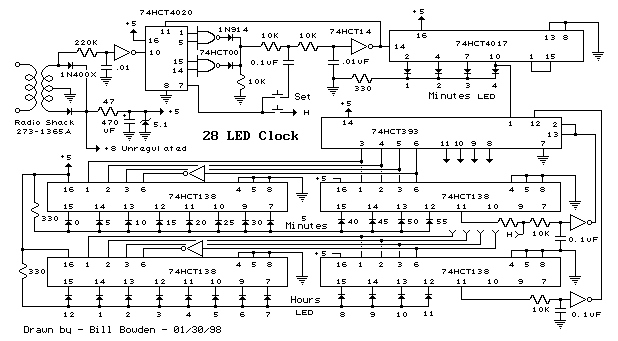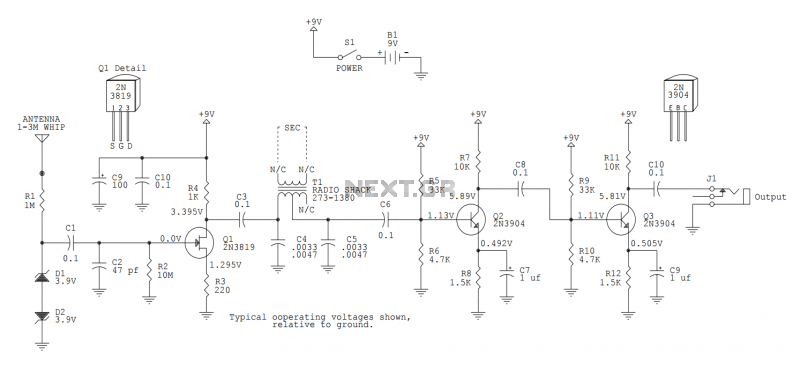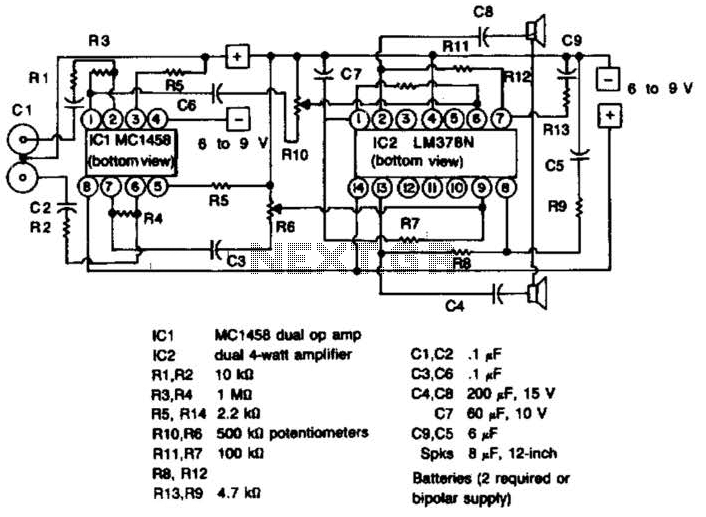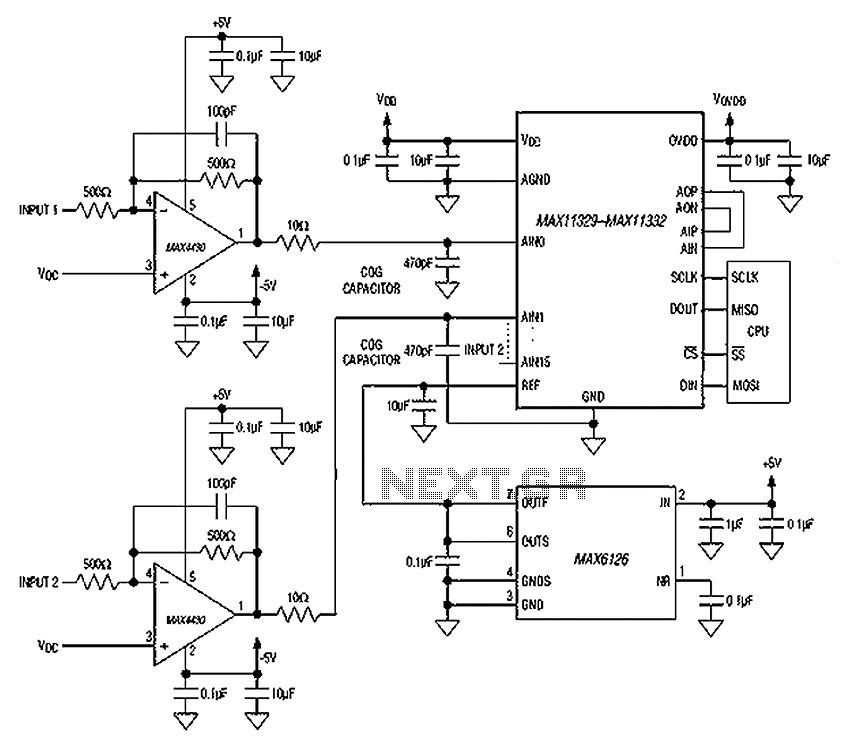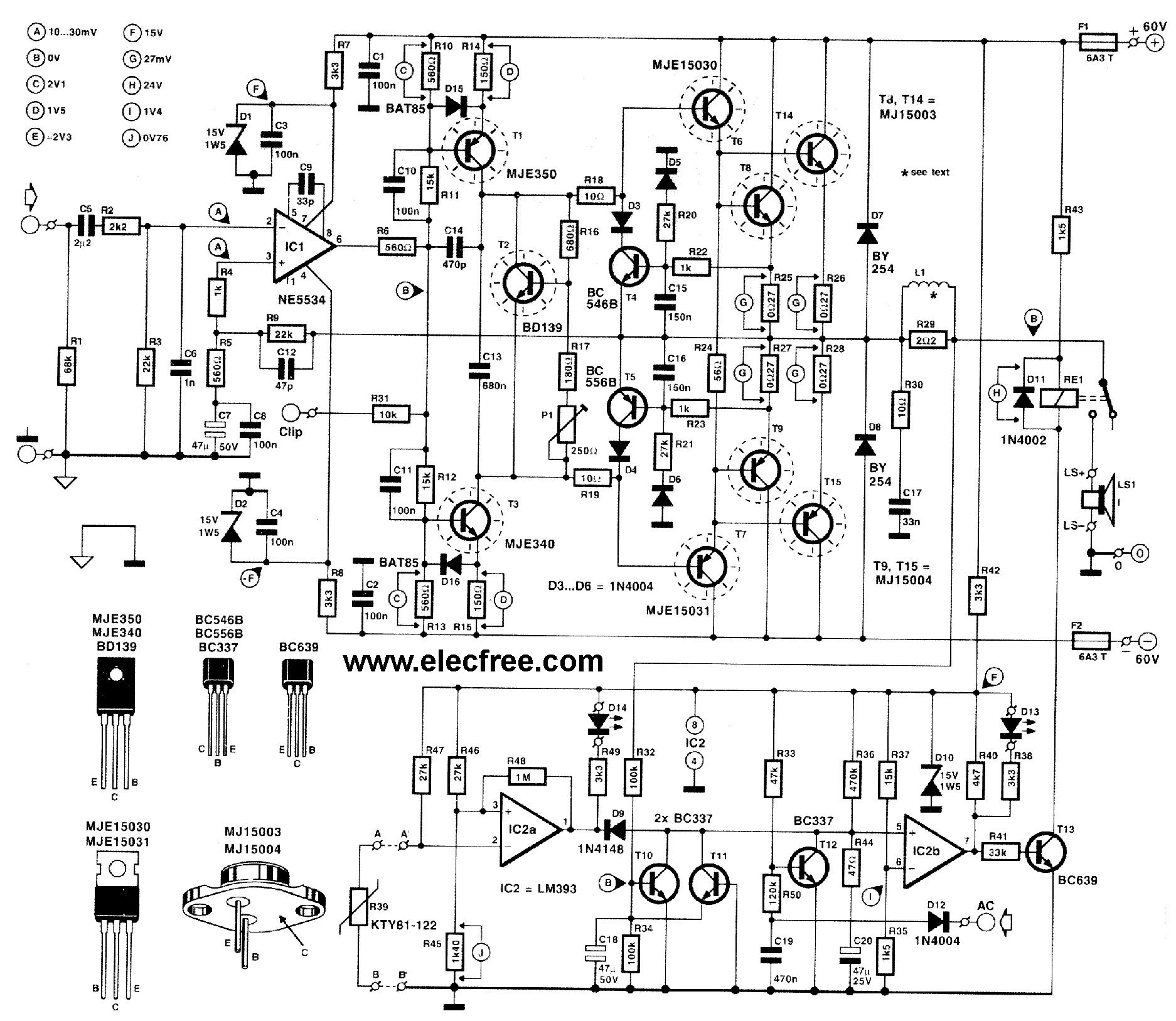
FM Antenna Booster Circuit
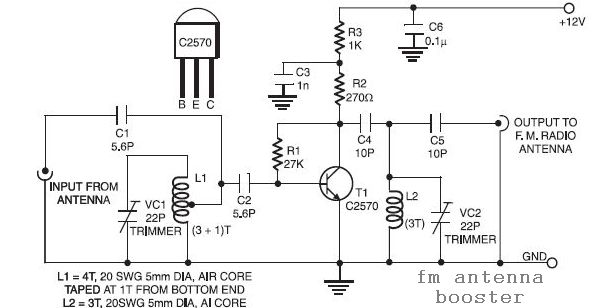
This is a low-cost FM antenna booster that can be used to listen to programs from distant FM stations clearly. The antenna FM booster circuit comprises a...
The FM antenna booster circuit is designed to enhance the reception of FM radio signals, particularly from distant stations. This circuit typically includes a few essential components: an operational amplifier (op-amp), a matching network, and a power supply.
The operational amplifier serves as the core of the circuit, amplifying the weak signals received by the antenna. The input stage of the op-amp is configured to optimize the signal-to-noise ratio, ensuring that the desired FM signals are amplified without introducing significant noise.
The matching network, which may consist of inductors and capacitors, is crucial for impedance matching between the antenna and the op-amp. This network helps to maximize power transfer and minimize signal reflection, thereby improving overall reception quality.
Power supply requirements for the circuit can vary, but it is generally designed to operate with low voltage DC sources, making it suitable for battery operation or connection to wall adapters.
In practical applications, the FM antenna booster can be connected directly to an existing FM antenna or can be used with a dedicated antenna designed for enhanced performance. By improving the signal strength and clarity of the received FM broadcasts, this circuit allows users to enjoy a broader range of stations and improved audio quality.
Overall, the low-cost FM antenna booster circuit is an effective solution for enhancing FM radio reception, particularly in areas where signal strength is weak or obstructed.This is a low cost fm antenna booster that can be used to listen to programmes from distant FM stations clearly. The antenna fm booster circuit comprises a.. 🔗 External reference
The FM antenna booster circuit is designed to enhance the reception of FM radio signals, particularly from distant stations. This circuit typically includes a few essential components: an operational amplifier (op-amp), a matching network, and a power supply.
The operational amplifier serves as the core of the circuit, amplifying the weak signals received by the antenna. The input stage of the op-amp is configured to optimize the signal-to-noise ratio, ensuring that the desired FM signals are amplified without introducing significant noise.
The matching network, which may consist of inductors and capacitors, is crucial for impedance matching between the antenna and the op-amp. This network helps to maximize power transfer and minimize signal reflection, thereby improving overall reception quality.
Power supply requirements for the circuit can vary, but it is generally designed to operate with low voltage DC sources, making it suitable for battery operation or connection to wall adapters.
In practical applications, the FM antenna booster can be connected directly to an existing FM antenna or can be used with a dedicated antenna designed for enhanced performance. By improving the signal strength and clarity of the received FM broadcasts, this circuit allows users to enjoy a broader range of stations and improved audio quality.
Overall, the low-cost FM antenna booster circuit is an effective solution for enhancing FM radio reception, particularly in areas where signal strength is weak or obstructed.This is a low cost fm antenna booster that can be used to listen to programmes from distant FM stations clearly. The antenna fm booster circuit comprises a.. 🔗 External reference

